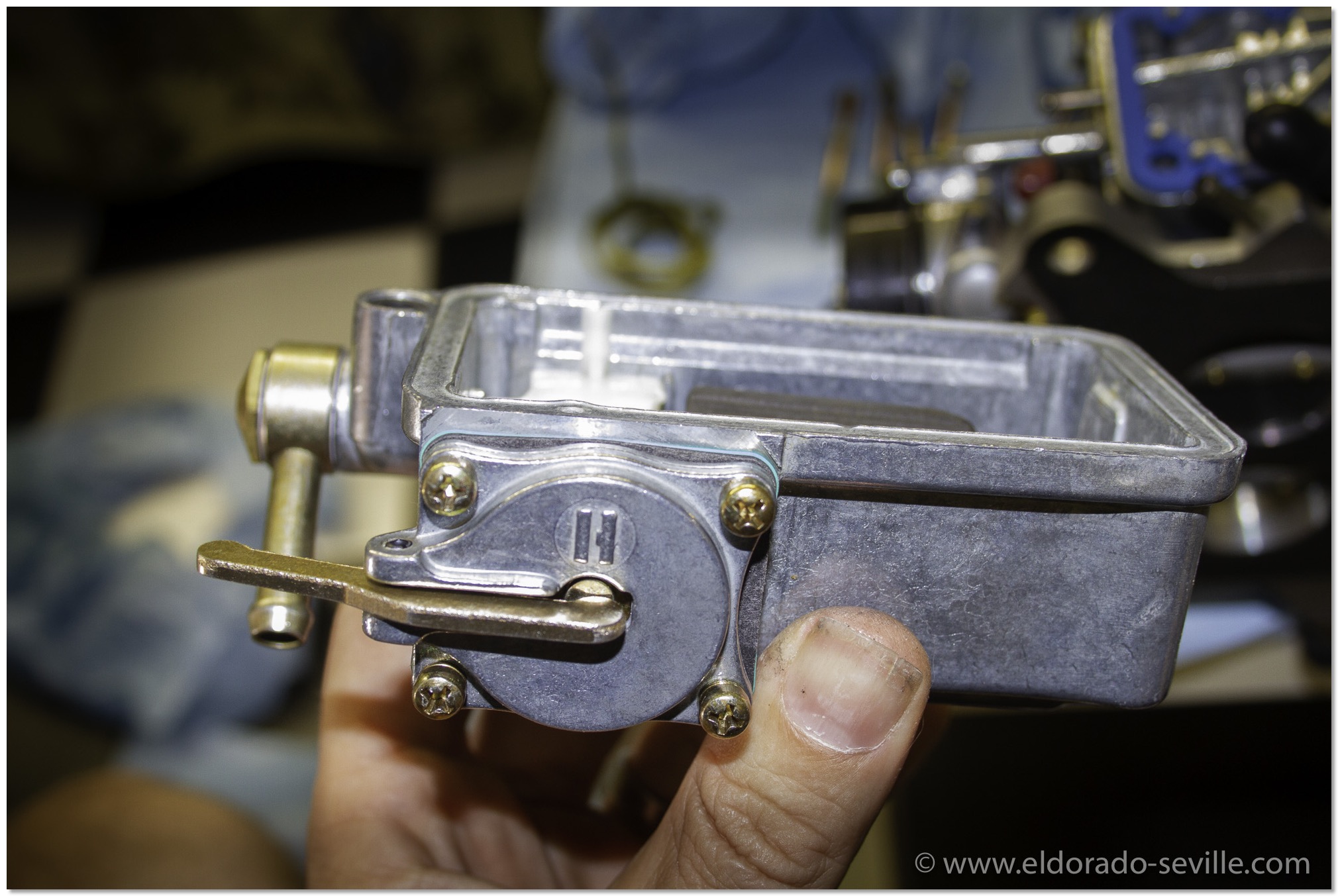1971 Lincoln Continental Mark III
LINCOLN MARK III BRAKE BLEEDING
10 | 09 | 25 | 16:32 | Filed in: 1971 Lincoln Continental Mark III | Restoration
Bleeding the Brakes on My ’71 Lincoln: What I Wish I’d Known First
This summer I refreshed the brake fluid in all my cars — including my 1971 Lincoln Mark III. I started with the method that always works on my Cadillacs: vacuum-bleeding each wheel until the fluid runs clear. Everything went fine… until it didn’t.
After bleeding the Lincoln lost all braking power and the brake warning light came on. After some head-scratching and a dive into the shop manual and forum threads, I learned the key detail I’d missed.
The Problem: Vacuum Bleeding Doesn’t Work on These Cars
After some head-scratching (and finally checking both the shop manual and a Lincoln forum), I learned something that would have saved me a lot of trouble:
You cannot bleed a 1971 Lincoln using a vacuum bleeder.
According to the factory manual, these cars must be pressure-bled from the master cylinder. If you vacuum-bleed the system, the front brake metering valve can trip. When it does, it shuts off fluid flow—instantly giving you that “no brakes at all” moment I experienced.
How to Reset the Metering Valve
Luckily, resetting the valve is quick and straightforward.
The metering valve is mounted underneath the front of the car at the crossmember, roughly centered under the engine.
On the ’71 Lincoln you must pull the pin out and hold it out. That opens the metering valve so fluid can flow — and while it’s held out, you can even vacuum-bleed the system safely.
The manual mentions a special tool for this, but in practice a small screwdriver or a pair of pliers does the job. The crucial point is to hold the pin open during bleeding so the valve stays open for continuous fluid flow. If the pin is not held out, the valve will block flow and you can end up with the “no brakes” moment I experienced.
Where to find it and how to do it
- Crawl under the front of the car and follow the brake lines to the center at the front crossmember (underneath the engine).
- Look for the metering valve — you’ll see a small rubber boot covering the pin.
- Pull the boot back, grab the pin (a screwdriver or pliers works), and pull the pin out.
- Hold it out while you vacuum-bleed each wheel (or clamp/pin it so it stays out).
- When bleeding is complete and no air remains, reinstall the pin and boot, then test the brakes carefully.
- Special tool: listed in the shop manual, but not strictly necessary.
- Practical substitutes: small screwdriver, long-nose pliers, or a hooked tool to pull and hold the pin.
- Hold the pin open the whole time you’re bleeding (don’t just press it).
- If unsure, perform a final pressure-bleed from the master cylinder or get a pro to confirm.
Brakes are critical. After bleeding, always check pedal firmness and perform a low-speed test in a safe area before driving normally. If the pedal feels spongy, or you’re not confident in the job, stop and have a professional inspect the system.
Final note
Earlier Mark III models used a more complicated valve that required calibration. I’m glad the ’71’s simpler pull-out pin made this fix straightforward — once I knew what to do. One pulled pin and a proper bleed later, the brakes came back to life.


That's the valve you have to open
Comments
PEACE, LOVE, JOY
10 | 12 | 19 | 10:16 | Filed in: Various | 1971 Lincoln Continental Mark III
Holiday greetings to all the visitors of my website!
This year the 1971 Lincoln Mark III is featured on our traditional seasons greetings card together with my beautiful wife Afra and my son Elliot.I also made a short behind the scenes film which you can see below.
This years picture was put together from 12 different photographs of the car, as we did not have a studio and only two flash lights. We had to shoot it in front of my garage just before all the cars went into storage for winter.
We have been doing these cards for quite a few years now-. You can see some previous cards here.

Our 2019 card
Click on the video to watch it.
LINCOLN MARK III CARBURETOR REBUILD
20 | 05 | 19 | 15:37 | Filed in: 1971 Lincoln Continental Mark III | Restoration
I just recently replaced the fuel pump on my Mark III. I thought that would have solved my problems for a while. When I started the car a couple of days later it did not idle as smooth as before though. I checked everything and when I touched one of the ignition wires I got an electrical shock. So I knew that I would have to replace the ignition wires and ordered some new ones with spark plugs. When I entered the garage the next day there were some fuel fumes in the air which one could smell pretty clearly. The new fuel pump was dry and after a while of searching I saw that the carburetor was leaking fuel out of the accelerator pump gasket…
CLICK BELOW TO READ MORE
READ MORE...
CLICK BELOW TO READ MORE
READ MORE...
1958 Cadillac (55)
1966 Cadillac Coupe deVille (16)
1967 Cadillac DeVille (54)
1967 Cadillac Eldorado (73)
1971 Lincoln Continental Mark III (24)
1974 Cadillac Coupe deVille (46)
1978 Cadillac Eldorado Biarritz (25)
1996 Buick Roadmaster (20)
Cadillac BIG Meet (2)
Car Shows (55)
Cruising (4)
CT6 (1)
For Sale (3)
Garage Stuff (32)
Pacer (1)
Restoration (140)
Various (55)
Video (20)
Website News (31)
1966 Cadillac Coupe deVille (16)
1967 Cadillac DeVille (54)
1967 Cadillac Eldorado (73)
1971 Lincoln Continental Mark III (24)
1974 Cadillac Coupe deVille (46)
1978 Cadillac Eldorado Biarritz (25)
1996 Buick Roadmaster (20)
Cadillac BIG Meet (2)
Car Shows (55)
Cruising (4)
CT6 (1)
For Sale (3)
Garage Stuff (32)
Pacer (1)
Restoration (140)
Various (55)
Video (20)
Website News (31)
- 6 way power seat
- 8-track
- 10 Ohm
- 429
- 1932
- 1957
- 1958
- 1958 Cadillac Eldorado Seville
- 1958 Cadillac Repair Tip
- 1959 Cadillac Eldorado Seville
- 1964
- 1965
- 1966
- 1966 Cadillac Coupe deVille
- 1966 Cadillac Repair Tips
- 1967
- 1967 Cadillac DeVille
- 1967 Cadillac Eldorado Repair Tip
- 1967 Cadillac Repair Tip
- 1967 Eldorado
- 1968
- 1970 Cadillac Eldorado
- 1971
- 1971 Lincoln Continental Mark III
- 1974
- 1974 Cadillac Coupe DeVille
- 1974 Cadillac Repair Tip
- 1976
- 1977
- 1978
- 1978 Cadillac Eldorado Biarritz
- 1978 Cadillac Repair Tip
- 1980 Cadillac Eldorado Biarritz
- 1996
- 2012
- 2014
- 2017
- 2018
- 2019
- 2022
- 2023
- 2025
- 3063206
- 7027235
- 7800483
- 7805675
- 7805676
- 12355706
- 17058531
- 17059968
- 17059969
- 22010515
- 22010661
- A.I.R
- A6
- AC
- AC Compressor
- AC Electrical Diagram
- ACC
- Accelerator Pump
- Accelorator pump
- Accident
- Actuators
- Adriatic Blue Metallic
- Ads
- Aftermovie
- Air Pump
- Aircondition
- AIRPUMP
- ALC
- Alternator
- AM
- AM-Transmitter
- Antenna
- Anti Rattle Clips
- Antique Gold
- Arizona Vintage Parts
- Arrival
- Article
- ASC
- Ash Tray removal
- ATC
- Atlantis Blue Firemist
- Austria
- Austro Classic
- Autolite SP-459
- Automatic Seat Back Release
- Award
- Banner
- Barn Find
- Battery
- Battery Tray
- Beach Race
- Bearing
- Bendix
- Biarritz
- Bigfoot
- Bill Hirsch Engine Enamel
- Bleeder Screws
- Bleeding
- Blower
- Bodywork
- Bolts
- Book
- Borg
- Brake Booster
- Brake Fluid
- Brake Gray
- Brakes
- Broken Bolt
- Brougham
- Bucket seats
- Buick
- Bumper End
- Bushings
- Cadillac
- Cadillac BIG Meet
- Cadillac BIG Meet
- Cadillac birthday cake
- Cadillac Blue
- Cadillac Color Selections Dealer Book
- Cadillac Coupe deVille
- Cadillac Dealer
- CADILLAC GRAND EUROPEAN
- Cadillac Meeting
- Cadillac Mini Meeting
- Camaro RS
- Caorle
- Car Show
- Carburetor
- Card
- Carpet
- Carter AFB
- Cavalry Twill Vinyl
- CB
- CBM
- CCCD
- Choke
- Christmas
- Citizens Band
- Classic Cadillac Club Deutschland
- Clay Towel
- Cleaning
- Clock
- Clockwork
- Clutch
- Clutch Coil
- Collector
- Colonial Yellow
- Color Coded Springs
- Commercial
- Compound
- Compressor
- Condenser
- Continental Mark III
- Control Head
- Conversion
- Convertible top
- Coolant
- Corona
- Cowl
- Cruise Control
- Cruising
- CT6
- CV Boots
- CV JOINTS
- D6230
- Dash Trim
- Decal Removal
- Decals
- Decoration
- Dehumidifier
- Delco Moraine
- Der Standard
- detailing
- Deville
- Diagnosis Chart
- Diagram
- Dial
- Digital Rotary Drum Clock
- Diner
- Disc Brakes
- Distributor
- Diverter Valve
- Door Jamb Switch
- Door Rubber Conduit
- Dornbirn
- Dot3
- Drive Shaft
- Driving tour
- Drum brakes
- Dry Ice Blasting
- Dry Ice Cleaning
- DVD
- Eastwood
- Eldorado
- Electric Choke Thermostat
- Electrical schematic
- Elvis
- Engine Bay
- Ep
- Epoxy floor
- Europe
- Evaporator
- Exide
- Factory Markings
- Fender Skirt
- Floor
- Flushing
- Flyer
- Foam
- For Sale
- Front AXLE
- Front brakes
- Front bumper filler
- Front Floor
- Front wheel bearing
- Fuel Filter
- Fuel Pump
- Fuel Sending Unit
- Fusible Link
- Garage
- Garage Cabinets
- Gasket
- GE
- Gear indicator
- General Time
- Glove box light
- Grand European
- H4
- Haus of Hot Rod
- Headlight Actuator
- Headlight doors
- Headlights
- Heater Core
- Heater Hose
- Heater Valve
- High Idle
- History
- Holley
- Honest John
- Hood
- Hood Emblem
- Hood Ornament
- Hose Clamp
- Hot Choke
- Hot Water Valve
- HotRod
- How to
- Hödlmayr
- Ignition Diagram
- Illuminated Entry
- John D‘Agostino
- John Foust
- Klassikwelt Bodensee
- Kremsmünster
- LaSalle
- Leather seats
- Light Switch
- Limited
- Lincoln
- Lincoln Mark III Repair Tip
- Low Mileage
- Magazine
- Marilyn Monroe
- Mark III
- Master Cylinder
- Master Switch
- Master Vacuum Switch
- Media Blasting
- Meeting
- Meguiras
- MK II
- Mobile
- Model
- Moldings
- Mom
- Mopar Nationals
- Mostkost Kustom
- Movie
- Munich
- Neon
- NOS
- Oberösterreicher des Tages
- oilchange
- ORF
- Overspray
- Pacer
- Paint
- Paint correction
- Paintjob
- Part Number
- Parts
- Patch Panel
- Perfect Circle
- Permabag
- Persian Lime
- Photo shooting
- Photoshooting
- Pictures
- PinUp
- POA Valve
- Power Antenna
- Power Servo
- Power Vent Windows
- Power Window
- Printed Circuit Board
- Programmer
- Pulley
- Quadrajet
- Quarter Panel
- Quartz Conversion
- R134
- Radiator
- Radio
- Rattle
- Rear brakes
- Rebuild
- Recalibrate
- RediRad
- Reed Switch
- Relais
- Relaunch
- Removing Overspray
- Repaint
- Repair
- Restoration
- RIP
- Roadhouse
- Roadmaster
- Rochester
- Rocker Arm Cover
- Rocker Panel Extension Clips
- Rostio
- Rotary Valve
- Rotterdam
- Rupes
- Rust removal
- Rust removal gel
- Sabre Wheels
- Sand Blasting
- Sandblasting
- Screed
- Season Greetings
- Seasons Greetings
- Seat Back Locks
- Seat Padding
- Seat Transmission
- See through ornament
- Self adjusters
- Self Starter
- Sepp's Garage
- Seville
- Sheetmetal
- Shocks
- shop manual
- short
- Sign
- Solenoid
- Spark Plug Wire Routing
- Speakers
- Special Award
- Speed Bleeder Screws
- Splash Guard
- Starter Diagram
- Starter Motor
- Steering Column
- Storage
- suction throttling valve
- sunroof
- suspension
- Swirl Mark removal
- Switzerland
- T3
- Taillight Cover
- Texan´s Choice Award
- Thermostat
- Tilt and Telescope
- Time capsule
- Tomsclub
- Torque Specifications
- Tower Hose Clamp
- Towtruck
- Trailer
- Transducer
- Transmission
- transmission control selector
- transmission control selector indicator light
- transmission shift indicator
- Treadle Vac
- Treffen
- Tri-Band
- Troubleshooting
- Trunk Cardboard Kit
- Trunk lid
- Trunk lining
- Trunk to bumper cover
- Turn Signal Switch
- TV
- Typisierung
- Ultimate Garage
- Underbody
- Undercarriage
- Undercoating
- Undercoating Removal
- Vacuum Booster
- Vacuum diagram
- Vacuum hoses
- Vacuum Master Switch
- Vacuum Schematic
- Vacuum Valve
- Valve Cover
- Various
- Vent Window Switch
- Vibration
- Vibrator
- Vicodec roof
- Video
- Vinegar
- Vinyl Roof
- Visitor
- Washer Fluid Float
- Washer Fluid Low Level Indicator
- Water Pump
- Wax
- Weatherstripping
- Website News
- Westclox
- Wheel Bearings
- Wheel Housing
- Wiesbaden
- Windlace
- Winter
- Wiring
- Wiring Diagram
- Wonderbar
- Workbench
- Zurzach
 GERALD´S CADILLACS - NEWS
GERALD´S CADILLACS - NEWS